Slow Made Furniture
Slow Made Furniture is a movement that celebrates the craftsmanship of handmade goods and appreciates the time invested into each piece. This concept harks back to the ‘good old days’ when things were just made to last, with an emphasis on functionality and quality over quantity, unlike modern cheap, mass-produced furniture.
Many man-made materials such as MDF and plywood contain high amounts of volatile organic compound (VOC) that emit toxic fumes (known as off-gassing) for significant periods of time that have a real and negative effect on our long-term health. I believe it is important to think about the impact our ‘stuff’ has on our environment, health, and lifestyle. By embracing the slow-making of furniture and with careful consideration throughout the whole process, we can have a more meaningful connection with the things we bring into our life.
This begins with the selection and provenance of the materials, deciding what tools to use and selecting appropriate finishing products, to ensure a higher quality product, while while reducing or eliminating unnecessary waste.
Here is an insight into the slow process:
-
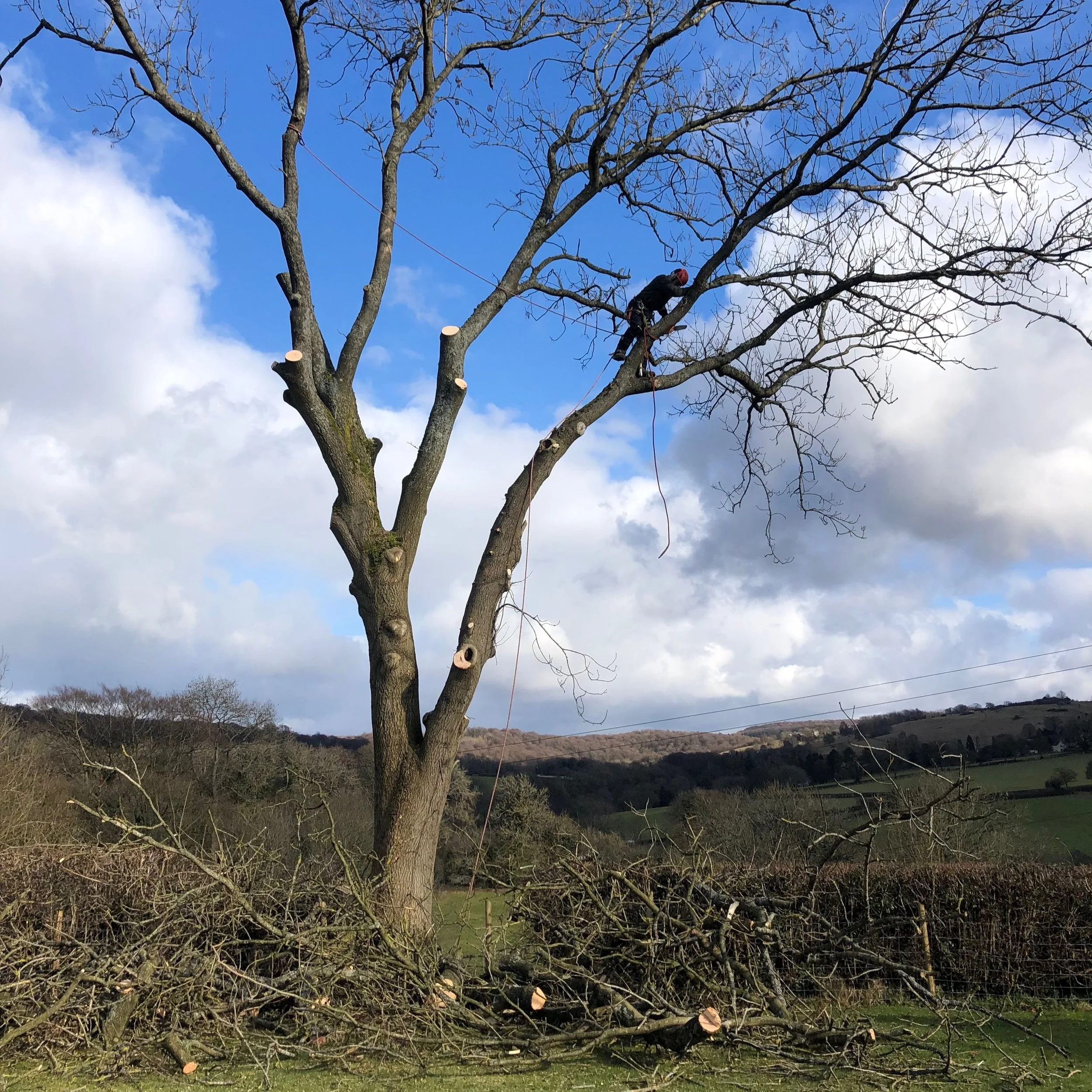
Find a Tree
Not just any tree though! Responsibly sourced timber means the tree needed to felled for a valid reason, be it woodland management or disease. This large ash for example had Hymenoscyphus Fraxineus or ‘ash dieback’ and was shedding limbs into the customers garden which posed a real danger to people and property.
-
Milling
Once a tree has been felled, the timber needs to be milled, which is an incredibly labour intensive process. This large oak limb was processed on site, as it was not feasible to move it due to the remote location.
-
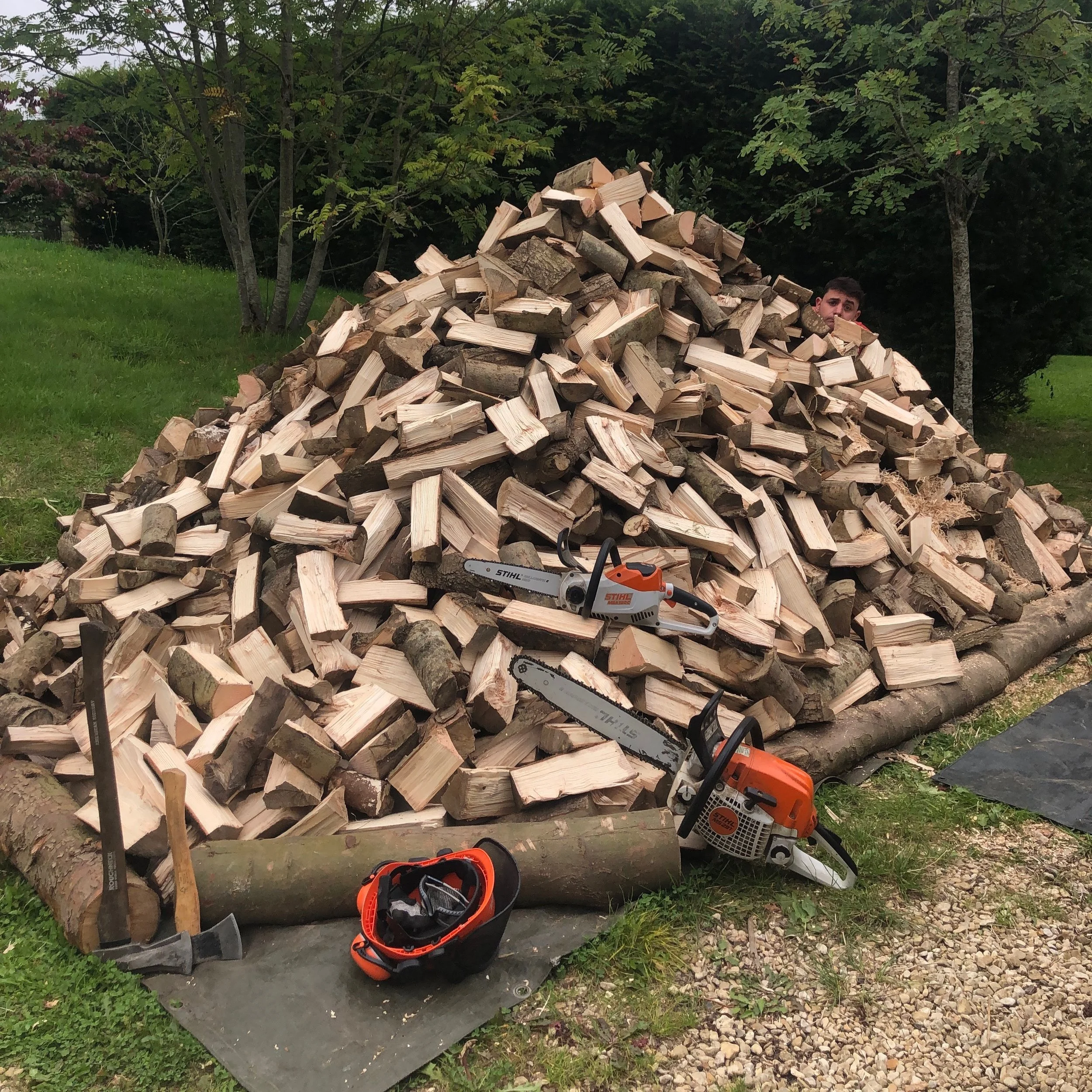
No Waste
Timber that is not milled is split into firewood and the smaller ‘brash’ and turned into wood chip.
Can you spot me in this photo?
-
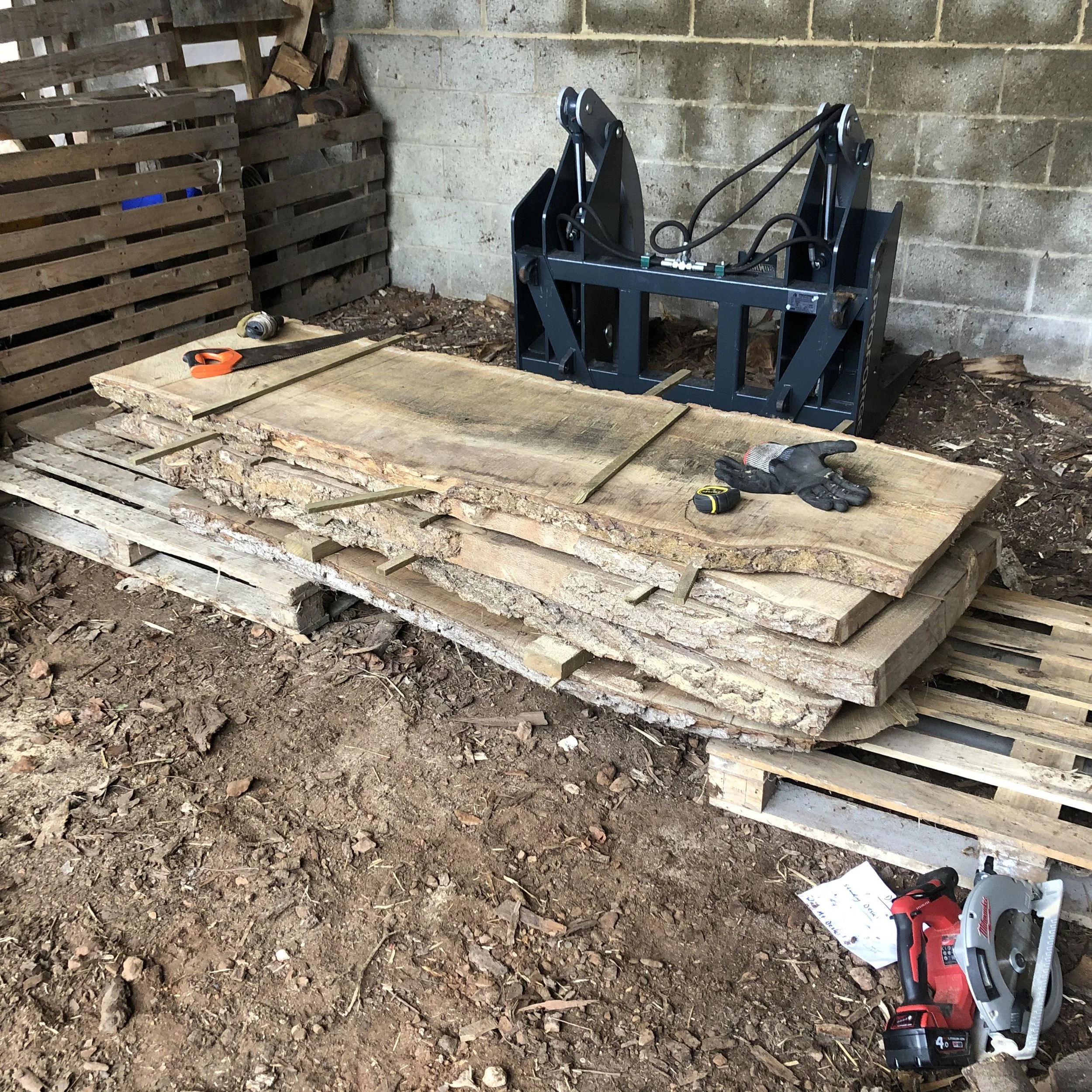
Barn Dry
Once the timber has been milled and removed from site, the timber will need to be stored and naturally barn-dried. As a rule of thumb, to dry a plank of wood, it takes a year per inch of wood (+1 year) before the timber reaches a workable moisture content for use in furniture at <10%.
-
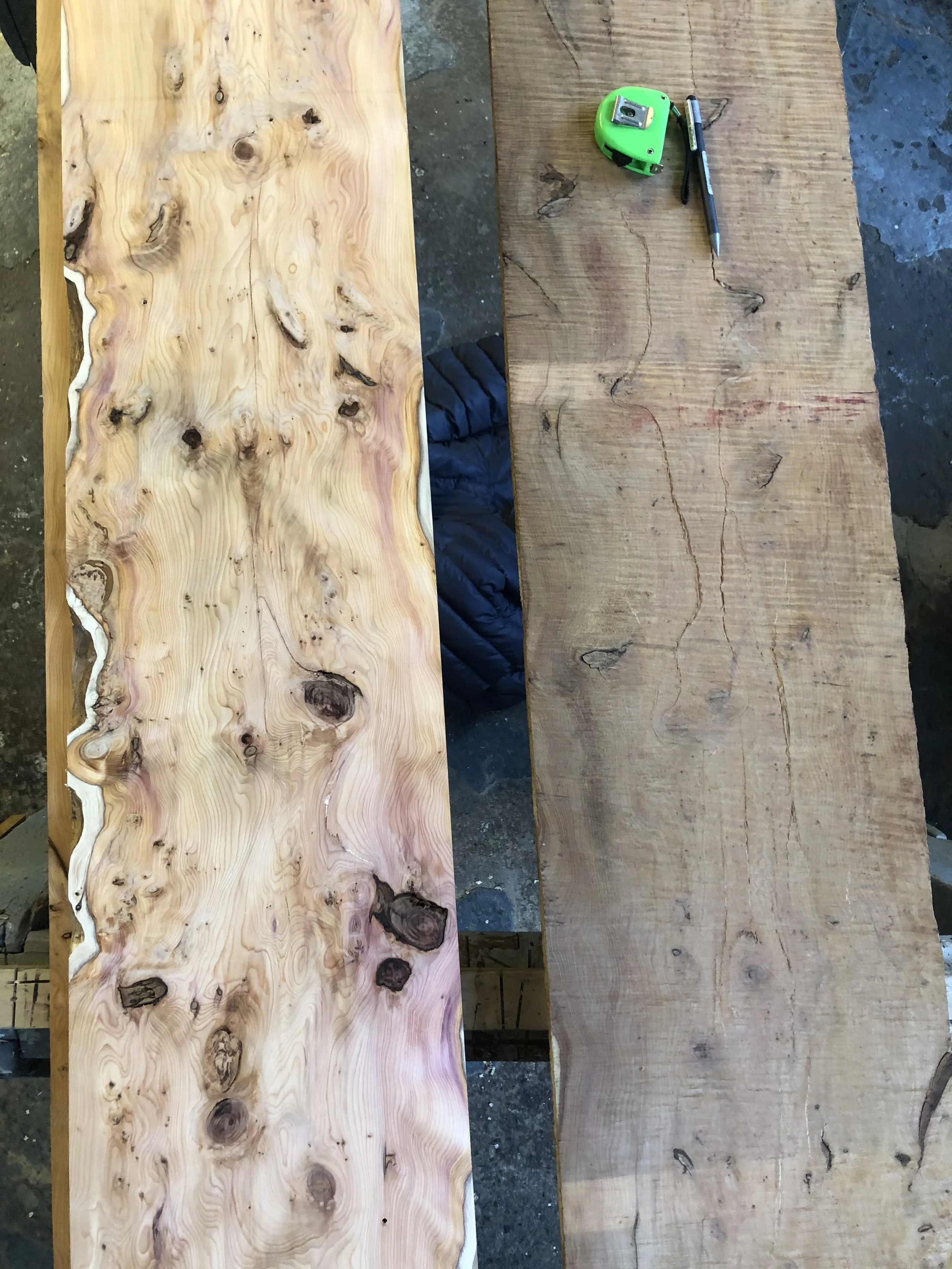
Plane
Depending on the species, thickness of the timber and where it is stored, it can take several years before the wood can be used. Once the wood is dry though, the fun really starts - I begin by planing the rough sawn timber to reveal the grain and character, so I can see what I’m working with!
-
Flatten
Probably the most challenging part - getting the timber flat and to an even thickness so it can be worked on. This can take a while, especially if you don’t have the right kit!
-
Shape
At the beginning of any project, I let each piece of wood influence the final design, by looking at its individual features such as shape, grain, knots and cracks. Here I am using a hand saw to roughly shape the handle of a cherry serving board.
-
Detail
The next step is concentrate on specific features; for example here I am stabilising some of the natural cracks that occurred through the drying process, with oak ‘bowtie’ inlays which provided a great contrast to the beech wood.
-

Crafting
My favourite part - the crafting and honing of the basic shape by bevelling edges and rounding off corners. This is done as much by touch as it is by sight, to create an ergonomic and aesthetic piece of functional furniture.
-
Sand - Sand Again - Sand Some More
So much sanding! Typically I would have already sanded after the flattening stage and during the shaping, detailing and crafting, through several different grits, using a combination of a belt sander, disc sander and by hand.
-
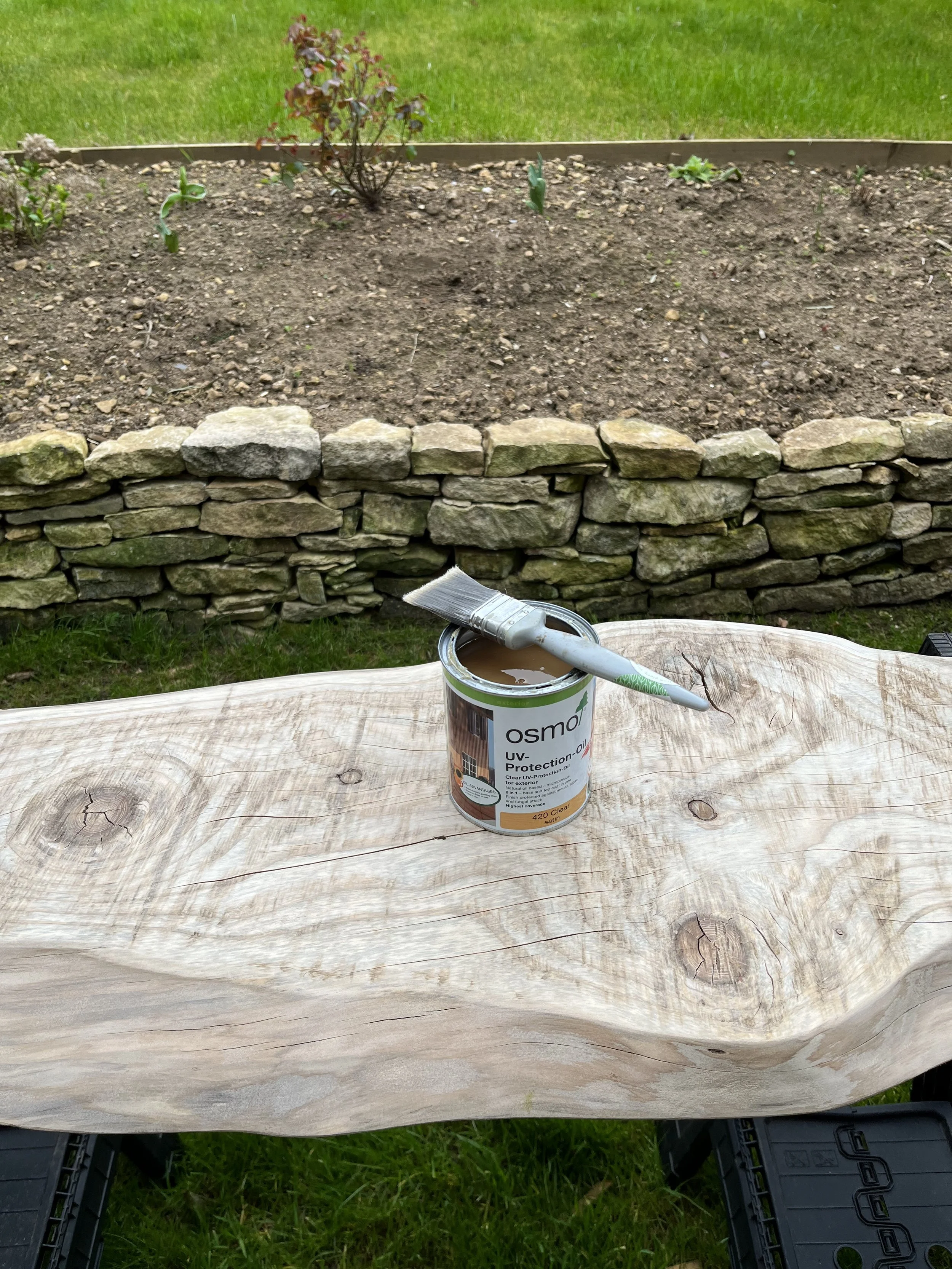
The Finish
An appropriate finish requires a lot of consideration in terms of how it effects the appearance of the wood, how protective it is, maintenance and how the piece will age, as well as finding environmentally conscious products.
Hard-Wax Oil - such as Osmo Poly-X are my preferred finish as it provides a smooth and highly durable finish that requires little maintenance and showcases the natural beauty of the grain.
Natural Oil - for this I like to use several coats of non-toxic spirit and linseed oil with a final layer of furniture wax. This gives furniture a more natural feel while, offering a moderate amount fo protection which allows the piece to age and develop a patina.
Food Safe - finishes used on chopping and serving boards must be suitable for contact with food, regular washing and knife damage. I treat mine with several coats of food-grade fractionated coconut oil, Osmo TopOil to the back and sides for durability and my own chopping board conditioner to provide a water-resistant protective finish.
-

Slow Made Furniture
After identifying a tree, felling it, milling it, transporting the timber, waiting for it to dry, then flattening, designing, shaping, sanding and oiling it, we finally have the finished product. Just a piece of wood right!
Take a look at the finished products on my Portfolio with photos throughout the slow process!




